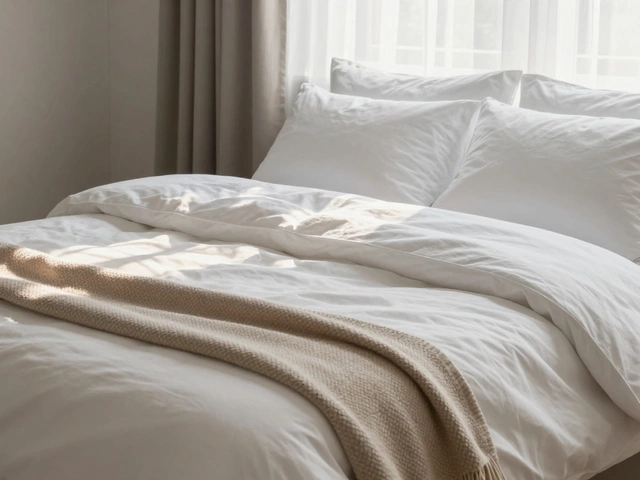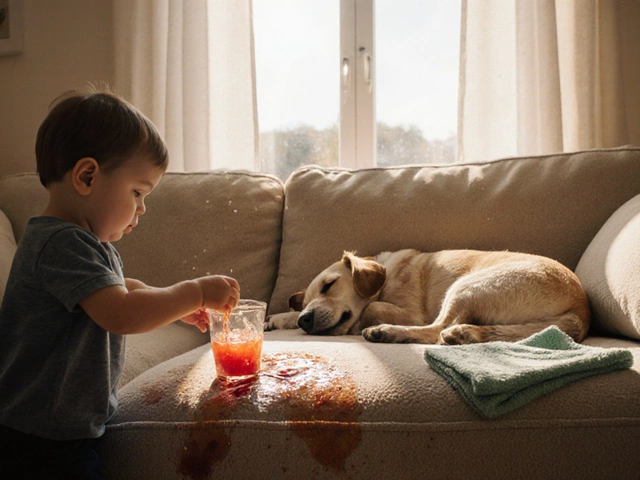Reading the Back of a Rug: What It Reveals About Quality, Age, and Care
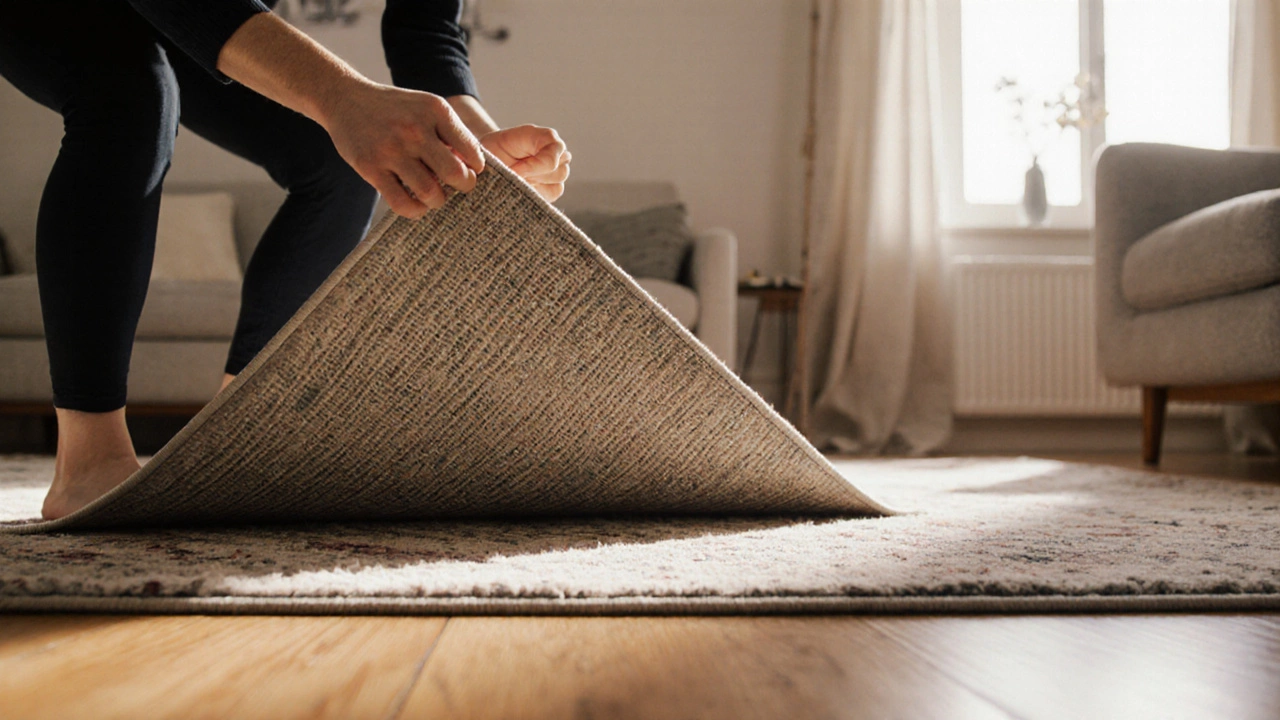
Rug Backing Guide
Identify Your Rug's Backing Type
Select the backing type you see on your rug to learn about its quality, care requirements, and best uses.
Pro Tip: Check for evenness in the backing, knot density (for hand-knotted rugs), fiber quality, and edge finishing to assess overall rug quality.
Ever stare at the underside of a rug and wonder if it’s just a jumble of fabric or a secret code? The truth is, the rug back can spill the beans on everything from how the piece was made to how long it’ll last in your living room. Let’s pull back the curtain and decode what that hidden side is really saying.
Why the Back Matters
Most shoppers focus on the front - the pattern, the colors, the texture underfoot. But the back is the rug’s structural blueprint. It tells you about the back of a rug is the underside layer that holds the pile in place, provides support, and often influences durability and safety. If you can read the signals there, you’ll make smarter buying decisions, avoid costly replacements, and keep your floors safer.
Common Backing Materials and What They Signal
Backings come in a handful of standard types. Knowing each one helps you gauge quality, comfort, and maintenance needs.
- Cotton backing is a natural, breathable layer often found in hand‑knotted or hand‑tufted rugs, indicating traditional craftsmanship. It’s soft, easy to repair, and usually a sign the rug was made to last.
- Latex backing is a rubber‑based adhesive layer that adds grip, common in machine‑made rugs for anti‑slip purposes. It boosts safety on hardwood but can trap moisture if not ventilated.
- Polypropylene (synthetic) backing is a lightweight, moisture‑resistant sheet used in budget flat‑weave rugs, suggesting lower cost and easier cleaning. It’s great for high‑traffic areas but may feel less plush.
- Non‑slip backing is a textured rubber or foam layer designed to keep the rug from sliding, often added to affordable rugs for safety. It’s a practical upgrade for kids’ rooms.
- Woven backing (woven lattice) is a tightly woven fabric that provides structural integrity, typical in high‑quality Persian and Oriental rugs. It shows the rug was built to handle tension across the entire surface.
| Backing | Typical Rug Type | Pros | Cons | Best For |
|---|---|---|---|---|
| Cotton | Hand‑knotted, Hand‑tufted | Breathable, repairable, durable | Can stretch over time | Living rooms, formal spaces |
| Latex | Machine‑made, Low‑pile | Excellent grip, stable | May trap moisture, harder to toss | Hallways, kitchens |
| Polypropylene | Flat‑weave, Outdoor | Water‑resistant, lightweight | Feels less plush | Patios, entryways |
| Non‑slip | Budget rugs | Prevents slipping | Can wear quickly | Kids rooms, rentals |
| Woven lattice | Traditional Oriental | Strong, even tension | Heavier, more expensive | Antique collections |
How to Spot Quality From the Back
When you flip a rug, look for these tell‑tale signs that hint at its overall quality.
- Evenness of the backing. A uniform weave or consistent layer means the rug was tightly constructed. Spotty or lumpy backing often signals shortcuts.
- Knot density. For hand‑knotted pieces, count the knots per square inch (KPSI). Higher KPSI (often 120+ for fine Persian rugs) shows meticulous work. You can see the knots from the underside; they’ll appear as tiny, evenly spaced dots.
- Fiber type visible. Premium wool fibers have a smooth, slightly glossy finish even on the back. Synthetic fibers tend to look matte and may have a hollow feel.
- Edge finishing. Look for a tightly bound fringe or reinforced selvedge. Loose or frayed edges indicate the rug may unravel quickly.
- Presence of a backing rod. Some high‑end rugs have a thin wooden or metal rod embedded to keep the rug flat. If you feel a subtle rigidity, it’s a sign of added stability.
These clues let you assess durability without spending a fortune on a professional appraisal.
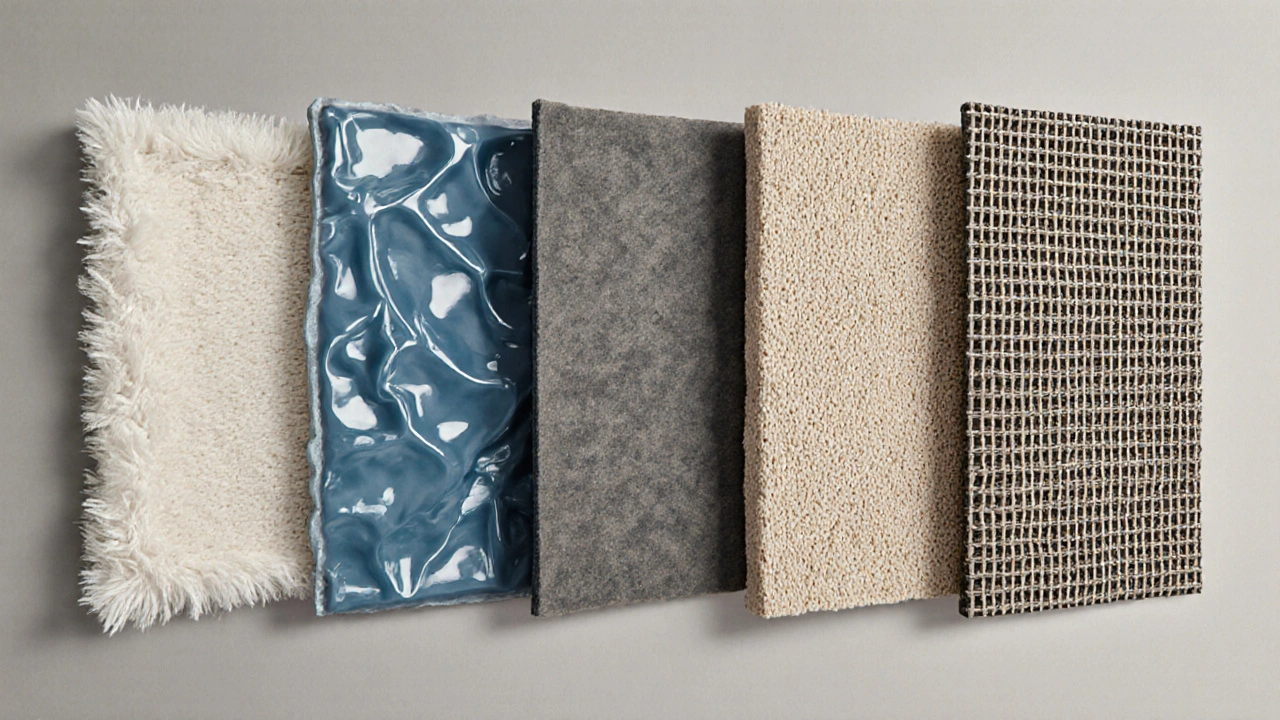
Reading Age and Wear Patterns
Just like a tree’s rings, the back of a rug can reveal its history.
- Patina on natural fibers. Over decades, wool naturally mellows, and the underside may develop a soft, slightly yellowed hue. That’s a badge of age, not damage.
- Compression spots. Areas that have been under heavy furniture will show compressed backing. If the compression is uniform, the rug likely endured long‑term static loads, hinting at its placement history.
- Repair patches. Look for seams or stitched patches - they’re often added when a rug has been mended. Quality repairs use matching material and tight stitching, while cheap fixes use visible plastic tape.
Spotting these nuances helps you estimate how many years the rug has already lived and whether it’s still a good investment.
Cleaning and Maintenance Tips Informed by the Back
Different backings demand different care routines. Here’s a quick cheat‑sheet.
| Backing | Cleaning Method | Frequency | Warning |
|---|---|---|---|
| Cotton | Gentle vacuum, spot‑clean with mild detergent | Weekly vacuum, as‑needed spots | Avoid soaking; can shrink |
| Latex | d>Low‑suction vacuum, damp mop with pH‑neutral cleanerBi‑weekly | Do not use harsh chemicals; can degrade latex | |
| Polypropylene | d>Regular vacuum, occasional steam clean (low heat)Weekly Seasonal deep clean |
Avoid high heat; may melt | |
| Non‑slip | d>Vacuum, wipe with a damp clothWeekly | Check for wear; replace backing if slippery | |
| Woven lattice | d>Professional cleaning recommendedEvery 6‑12 months | Do not attempt DIY deep cleaning |
When in doubt, always test a small hidden area first. A quick dab with water will tell you if the backing absorbs too much - if it does, you likely have a cotton or wool back that needs extra drying time.
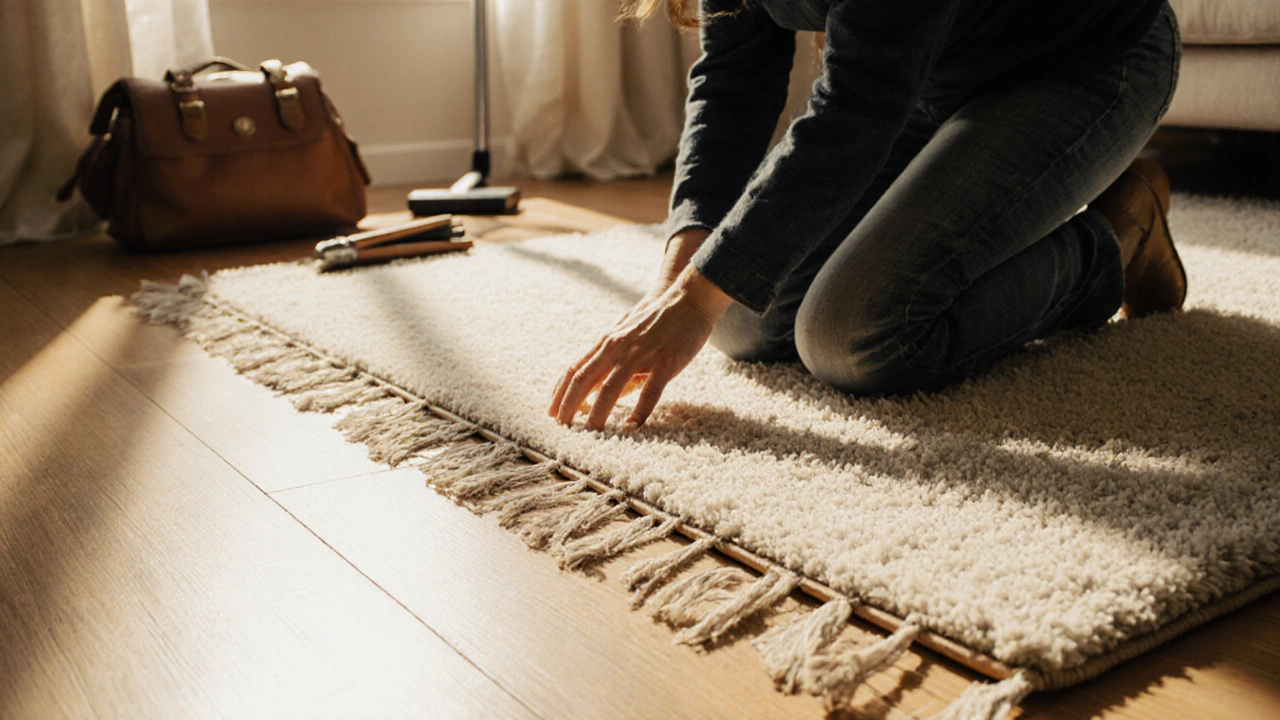
DIY Checks Before Buying a Rug
Before you hand over cash, run through this short checklist - it’s faster than a full‑blown expert inspection.
- Flip the rug and note the backing material. Does it match the price point?
- Run your fingers over the underside. Is it smooth (wool) or plasticky (synthetic)?
- Look for an even weave. Any loose threads? That could spell future fraying.
- Check the edges. Are they bound tightly? Loose fringes often pull apart.
- Ask the seller about any past repairs. A well‑documented repair is better than a hidden one.
If the rug passes at least four of these steps, you’re likely getting a solid piece that will hold up for years.
When to Consider Re‑backing or Professional Restoration
Even the best rugs can suffer backing wear. Here’s when you should think about a professional touch.
- Back starts to separate. You’ll feel a ticklish gap when you run a hand over it. Re‑backing can extend life dramatically.
- Persistent odors. A musty smell often lives in the backing, especially cotton. A deep cleaning or replacement backing is needed.
- Slide hazard. On hardwood, a worn non‑slip layer can become slick. Swapping in a new anti‑slip pad restores safety.
Professional re‑backing costs vary, but budgeting 10‑20% of the rug’s original price is a reasonable rule of thumb.
Frequently Asked Questions
What does a cotton backing indicate about a rug’s quality?
Cotton backing usually means the rug was hand‑made or hand‑tufted with traditional methods. It’s breathable and can be repaired, suggesting higher durability compared to cheap synthetic backs.
Can I replace the backing of a hand‑knotted rug myself?
DIY re‑backing is possible but risky. Hand‑knotted rugs have delicate knots that can be disturbed. For valuable pieces, hire a professional who knows how to preserve knot integrity.
How does backing affect a rug’s slip resistance?
Backings with latex or non‑slip rubber provide grip on smooth floors. Plain cotton or wool backs can slide unless you add a separate rug pad underneath.
Is a synthetic backing always a sign of low quality?
Not necessarily. Polypropylene or polyester backings are common in outdoor or high‑traffic rugs where water resistance and durability matter more than plush feel.
What maintenance routine works best for rugs with latex backing?
Use a low‑suction vacuum to avoid stretching the latex, spot‑clean with a pH‑neutral cleaner, and keep the area well‑ventilated to prevent moisture buildup.



